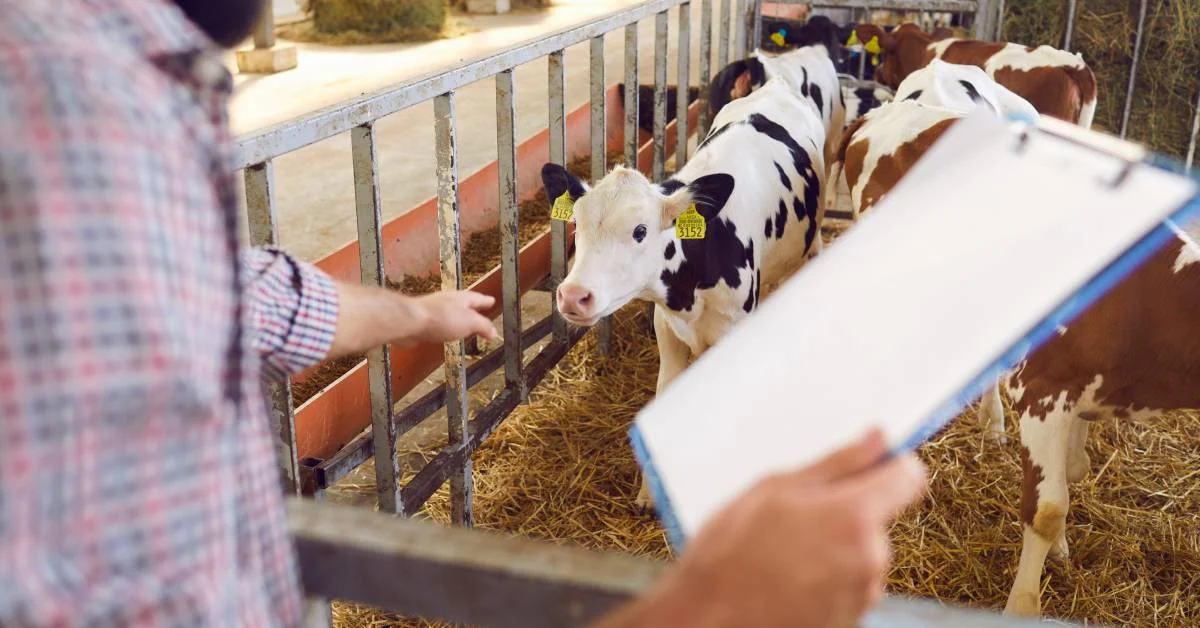With more than 30 years of expertise installing hundreds of miles of smooth-wire electric fences, we have observed just about every type of fencing blunder. The worst thing is, people keep on making the same common errors. Making cattle fencing easier, faster, stronger, and safer is still a continuous challenge.
A little preparation counts for a lot toward preventing the most typical blunders farmers and ranchers make when it comes to cow fencing. Fencing a cattle ranch is a substantial financial and time commitment. On the other hand, an inadequate fence can cause problems such as runaway or lost stock, cattle wandering into areas they shouldn’t, and, in case of a disastrous event, danger to your animals or people.
Rather than paying to fix problems later, take our word for it and avoid these typical cow fencing blunders right away. There is always something new to discover the most beneficial approach to design cattle fencing, whether you are an expert rancher or beginner to cattle fencing. Along the process, everyone commits errors. We have compiled a list of the most basic cattle fencing blunders to prevent so you may benefit from the experience of others and ensure your achievement.
1. Corner Posts are Either too Small or too Shallow
Your cattle fence’s corner posts can help or hinder since if the corners collapse, the whole of the fence would too. In farm fencing, two of the most popular mistakes are utilizing inadequate corner fence posts and failing to install corner posts deep down into the soil. The size of the posts will be determined by the amount of force your fence requires. A 4- to 5-inch diameter post is necessary for light-duty fences like a high pasture fence, while a 6- to 7-inch diameter post is needed for barbed wire fencing or high-tensile wire fence. Net wire fences may necessitate a post diameter of 8 inches.
In locations with soft or sandy soils, failing to put corner posts deeply enough is more common. The thickness of your posts should be equivalent to or larger than the length of the top wire. If the fence is 6 feet tall, for example, you will want to make absolutely sure the corner posts are planted 6 feet into the earth. Your corner posts will hold back in the ground with the intervention of a steel beam. You should also make sure you are using an excellent t-post driver.
2. Posts are a Little too Close Together
Another significant problem is that posts are not widely positioned apart. This could be because those who are most acquainted with barbed wire fencing use the piece of advice with one post for every rod height or 16.5 feet. Nevertheless, this isn’t the case for all types of fencing, and it’s critical to position posts depending on the materials you will be employing.
You can place your posts a little further apart for battery-powered cow fencing. Simply positioning fence posts 80 to 100 feet away while using shorter “stay” posts to keep wirelessly connect is recommended by some fencing specialists. This equates to approximately 50 posts every mile. Based on individual choice, other specialists suggest spacing posts 50 to 70 feet away.
Also Read: Cattle Health Monitoring System that Keeps your Animals Healthy
3. The Ground Rods are Closer Together
When it comes to installing ground rods in a battery-powered cow fence, spacing is essential. The ground rod operates as a transmitter, receiving electrons as they pass through the soil and return to the ac adapter. The circuit is now built. Per joule of energizer power, professionals suggest 3 feet of ground rods. If you get a 6-joule energizer, it implies you will require 18 feet of ground rods.
Whereas other fencers would place three ground rods beside the energizer, these ground rods should be evenly spaced across the fencing area. This is highly crucial if the area’s typical rainwater is insufficient for proper grounding.
Use galvanized rods for the ground rods and for your energizer, use an insulated galvanized lead-out wire for the greatest outcomes. These are less pricey than copper-based alternatives, but you won’t have to worry about rusting.
4. You are Using the Incorrect Energizer type
Another typical cattle fencing blunder is to select the wrong size energizer when constructing an electric cattle fence. Irrespective of how many wire segments you utilize, you should strive for 1 joule of output every mile of fence. This suggests that if your fence is 6 miles long, you’ll need a 6-joule energizer.
When attempting to energize through vegetation that comes into touch with the line, bigger energizers create lower voltage and are far more prone to trip out. As a result, look for an energizer with a voltage of 7,000 to 8,000 volts.
5. You Have Not Yet Built Your Fence Fit For Wildlife
This may seem contradictory initially. Many farmers and ranchers choose to put a fence to keep deer and antlers out of their land. Nevertheless, keeping your livestock secure and preventing fence breakage or failures may necessitate a more adaptable fence. When confronted with huge wildlife, an electric fence with high-tensile on t-posts, for example, may flex and collapse. You have come to the right site if you are seeking high-quality farm fencing products. Barbwire fencing tools, net fencing, panels, gates, livestock guards, and other hardware like the t-post driver are available at different Farm Stores.
6. Solar Panels that are Not Exposing the Sun Straight
A solar panel will not perform to its highest capacity if it is not correctly mounted. Reading the instructions and seeking an expert’s advice is highly recommended before installing a solar panel. Don’t rely on assumptions to determine whether you have completed the task correctly.
7. All Staples are Hammered in
Don’t staple plastic piping too tightly when utilizing it as an insulator. You will spend a long time looking for a temporary barrier since the staple had punctured the tubing near a ground wire, resulting in a concealed short.
Conclusion
Electric fencing with high-tensile, smooth wire is the quickest and perhaps the cheapest fence that farmers have, and its technology has advanced dramatically in the last ten years. Many people, however, are apprehensive about getting because of negative experiences, such as cables splitting, chargers catching fire, moist vegetation shorting out the fence, and many other challenges.
You may preserve hundreds of dollars and months of upkeep by putting electric fencing to service for you with a modest dedication and a minimal investment of learning how to use this innovative technology. These typical blunders mentioned above are taken from several experiences that can help you avoid mistakes in future.







